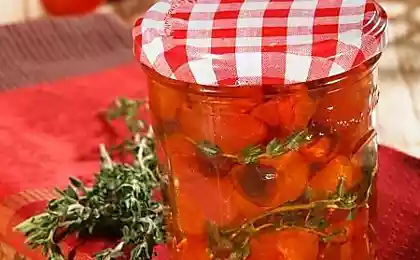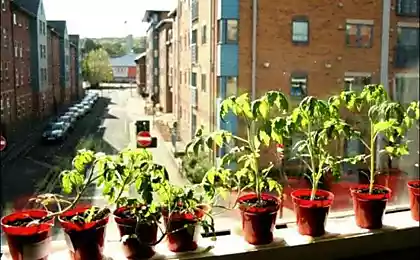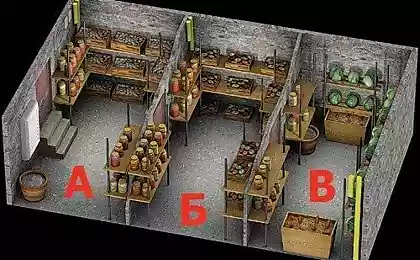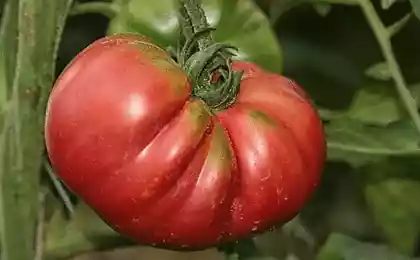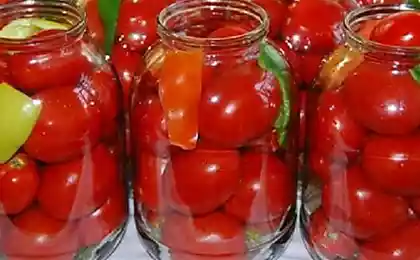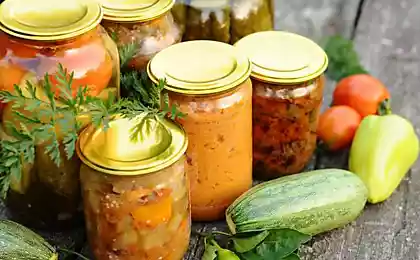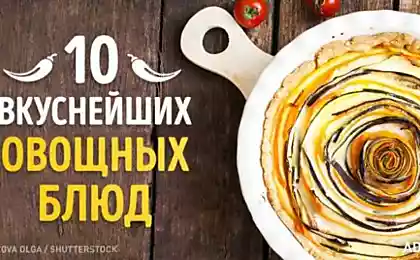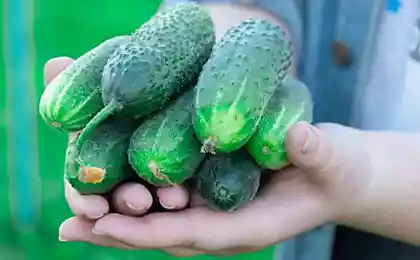312
How to keep tomatoes fresh for a long time
Keeping tomatoes fresh until spring is the desire and goal of many summer residents. This is understandable: the fruits contain many useful minerals, potassium, iron and a whole complex of vitamins. Of course, in our time, you can buy beautiful fresh tomatoes all year round in stores, but they won’t replace your own, right? Grown with their own hands more juicy, fragrant and very, very tasty.
What varieties can lie for a long time, how to store them correctly and, most importantly, where?
It is no secret that optimal storage conditions make it possible to save various vegetables, fruits and berries (which, incidentally, include tomatoes) in fresh form for a long time.

It's time to talk about the nuances of long-term tomato storage. It turns out they can stay fresh for quite some time without much effort. The main thing is to know some secrets.
Saving tomatoes for a week or two is not difficult. Simply put them in a paper bag and put them in the refrigerator – on the shelf for storing vegetables. But to save in safety until the New Year and, especially, until spring, you need not only your desire and suitable storage conditions, but also special varieties.
Consider an important nuance: regardless of the variety, tomatoes grown in the open ground are stored better than greenhouses.
For long-term storage, medium-late and late varieties of tomatoes are suitable, for example:
What conditions are required for the storage of tomatoes
How to collect and prepare tomatoes for storage: By following these simple recommendations, you will reduce the risk of spoilage to a minimum:
Mature tomatoes in this way can last a week, but it is unlikely to save them longer. Of course, we are not talking about individual specimens that can lie in the refrigerator for about 2 weeks.
But storing tomatoes in a cellophane bag, of course, is very convenient and practical, but wrong. Cellophane does not let air through, so a high level of humidity is created inside the package. Naturally, in such conditions, tomatoes begin to deteriorate rapidly.
Removing tomatoes for storage in a cellar or basement, they also need to be laid in layers in wooden or plastic trays (boxes), laying each layer with paper or pouring sawdust. It is even better if each fruit has a paper wrapper. Put the crop in boxes or trays you need in three layers, no more - take this into account.
And, regardless of where they are stored: in the cellar, basement or in the refrigerator, you should periodically, about once every 7 days, “look” to them with verification. Remove and remove all damaged fruits.
5-8 days before you intend to eat delicious fresh tomatoes, they should be taken to a bright warm room for final dosing (maturation, consumer ripeness).
For a long time (3-5 months) you can save tomatoes in ordinary glass jars. There are several ways, such as:
Method 1
Tomatoes of mammary ripeness, without signs of disease and skin damage, must be carefully washed, dried and folded into a clean sterilized jar, without pressing tightly against each other. After filling it to the top, you need to pour 3 spoons of alcohol inside, close with a capron cover and turn well in your hands. Thanks to such simple manipulations, all tomatoes will moisten with alcohol. Then lower the wick inside and set it on fire from the outside. As soon as the alcohol begins to burn, the jar is quickly rolled with a metal cover.
Method 2
Wash the tomatoes thoroughly and spread them outdoors for drying. Meanwhile, sterilize the cans and at the bottom of each of them pour 2 tablespoons of mustard powder. Put in a jar of tomatoes, pouring a little mustard each subsequent layer. After filling the jar, pour another spoonful of mustard powder into it, then roll with a metal lid. Just for a 3-liter jar you should take about 5-6 tablespoons of mustard powder.
Thanks to such methods of preservation, tomatoes will remain fresh for about 4-5 months. And remember: no matter how you use, the banks must be removed for storage in a cool dark place, ideally a cellar or basement.
P.S. Laying tomatoes for long-term storage, I was tormented by the question of whether to wash them or not to wash them. Some argue that it is absolutely impossible to wash. Others, on the contrary, advise to keep the fruit in hot water (+55 ... + 60 ° C) for about 3-5 minutes. So, allegedly, all pathogens of phytophthora will be destroyed. I did not wash tomatoes, but just rubbed alcohol with each fruit.
P.S. And remember, just changing our consumption – together we change the world!
Source: www.7dach.ru
What varieties can lie for a long time, how to store them correctly and, most importantly, where?
It is no secret that optimal storage conditions make it possible to save various vegetables, fruits and berries (which, incidentally, include tomatoes) in fresh form for a long time.

It's time to talk about the nuances of long-term tomato storage. It turns out they can stay fresh for quite some time without much effort. The main thing is to know some secrets.
Saving tomatoes for a week or two is not difficult. Simply put them in a paper bag and put them in the refrigerator – on the shelf for storing vegetables. But to save in safety until the New Year and, especially, until spring, you need not only your desire and suitable storage conditions, but also special varieties.
Consider an important nuance: regardless of the variety, tomatoes grown in the open ground are stored better than greenhouses.
For long-term storage, medium-late and late varieties of tomatoes are suitable, for example:
- "De Barao" - medium-ripe indeterminant (with unlimited growth) variety, in height can reach 2.5 meters, and sometimes more. Oval fruits (depending on the variety) are red, pink, yellow, striped and even black.
- "San Marzano" is an indeterminant (with unlimited growth) high-productive variety; the fruits are dense, fleshy, bright red, elongated creamy form, reach a mass of up to 150 grams.
- "Giraffe" is a tall (indeterminant) variety, reaching a height of 1.2 meters. Round-shaped fruits can be stored until March.
- “Long Kiper” is a determinant variety, the long-preserving fruits of which can weigh 250 and sometimes 400 grams; fresh can last until February-March.
- "Masterpiece-1" is a late-ripe low-growth variety, the bush of which reaches a height of 60 centimeters. Red flat fruits weighing about 80-200 grams can remain fresh almost until spring.
What conditions are required for the storage of tomatoes
- The storage area should be dark and cool. Ideally, this is a refrigerator shelf designed for vegetables, a cellar or basement.
- The temperature in the storage should be from +5 to +12 ° C with a relative humidity of 80%.
- The fruits must be carefully laid up with a peduncle in wooden or plastic containers (boxes, trays).
How to collect and prepare tomatoes for storage: By following these simple recommendations, you will reduce the risk of spoilage to a minimum:
- For a long time, the fruits will be stored, which are removed from the bushes before the night temperature drops below + 8 ° C. If they have suffered frost on the bush, they will not lie down for long, even if now you do not see obvious signs of frost damage.
- The right time to harvest is also important: it is better to remove the fruits from the bush in the day when there is no dew on them.
- To extend the shelf life to the maximum, careful sorting is necessary. Choose only whole, intact fruits that have reached milky ripeness (still green tomatoes that have already grown to the size inherent in the variety).
- Before laying them in a storage container, you need to lightly wipe each copy with a cotton wool soaked in vodka (without additives) or alcohol. This will destroy all microorganisms on the surface of tomatoes.
Mature tomatoes in this way can last a week, but it is unlikely to save them longer. Of course, we are not talking about individual specimens that can lie in the refrigerator for about 2 weeks.
But storing tomatoes in a cellophane bag, of course, is very convenient and practical, but wrong. Cellophane does not let air through, so a high level of humidity is created inside the package. Naturally, in such conditions, tomatoes begin to deteriorate rapidly.
Removing tomatoes for storage in a cellar or basement, they also need to be laid in layers in wooden or plastic trays (boxes), laying each layer with paper or pouring sawdust. It is even better if each fruit has a paper wrapper. Put the crop in boxes or trays you need in three layers, no more - take this into account.
And, regardless of where they are stored: in the cellar, basement or in the refrigerator, you should periodically, about once every 7 days, “look” to them with verification. Remove and remove all damaged fruits.
5-8 days before you intend to eat delicious fresh tomatoes, they should be taken to a bright warm room for final dosing (maturation, consumer ripeness).
For a long time (3-5 months) you can save tomatoes in ordinary glass jars. There are several ways, such as:
Method 1
Tomatoes of mammary ripeness, without signs of disease and skin damage, must be carefully washed, dried and folded into a clean sterilized jar, without pressing tightly against each other. After filling it to the top, you need to pour 3 spoons of alcohol inside, close with a capron cover and turn well in your hands. Thanks to such simple manipulations, all tomatoes will moisten with alcohol. Then lower the wick inside and set it on fire from the outside. As soon as the alcohol begins to burn, the jar is quickly rolled with a metal cover.
Method 2
Wash the tomatoes thoroughly and spread them outdoors for drying. Meanwhile, sterilize the cans and at the bottom of each of them pour 2 tablespoons of mustard powder. Put in a jar of tomatoes, pouring a little mustard each subsequent layer. After filling the jar, pour another spoonful of mustard powder into it, then roll with a metal lid. Just for a 3-liter jar you should take about 5-6 tablespoons of mustard powder.
Thanks to such methods of preservation, tomatoes will remain fresh for about 4-5 months. And remember: no matter how you use, the banks must be removed for storage in a cool dark place, ideally a cellar or basement.
P.S. Laying tomatoes for long-term storage, I was tormented by the question of whether to wash them or not to wash them. Some argue that it is absolutely impossible to wash. Others, on the contrary, advise to keep the fruit in hot water (+55 ... + 60 ° C) for about 3-5 minutes. So, allegedly, all pathogens of phytophthora will be destroyed. I did not wash tomatoes, but just rubbed alcohol with each fruit.
P.S. And remember, just changing our consumption – together we change the world!
Source: www.7dach.ru



